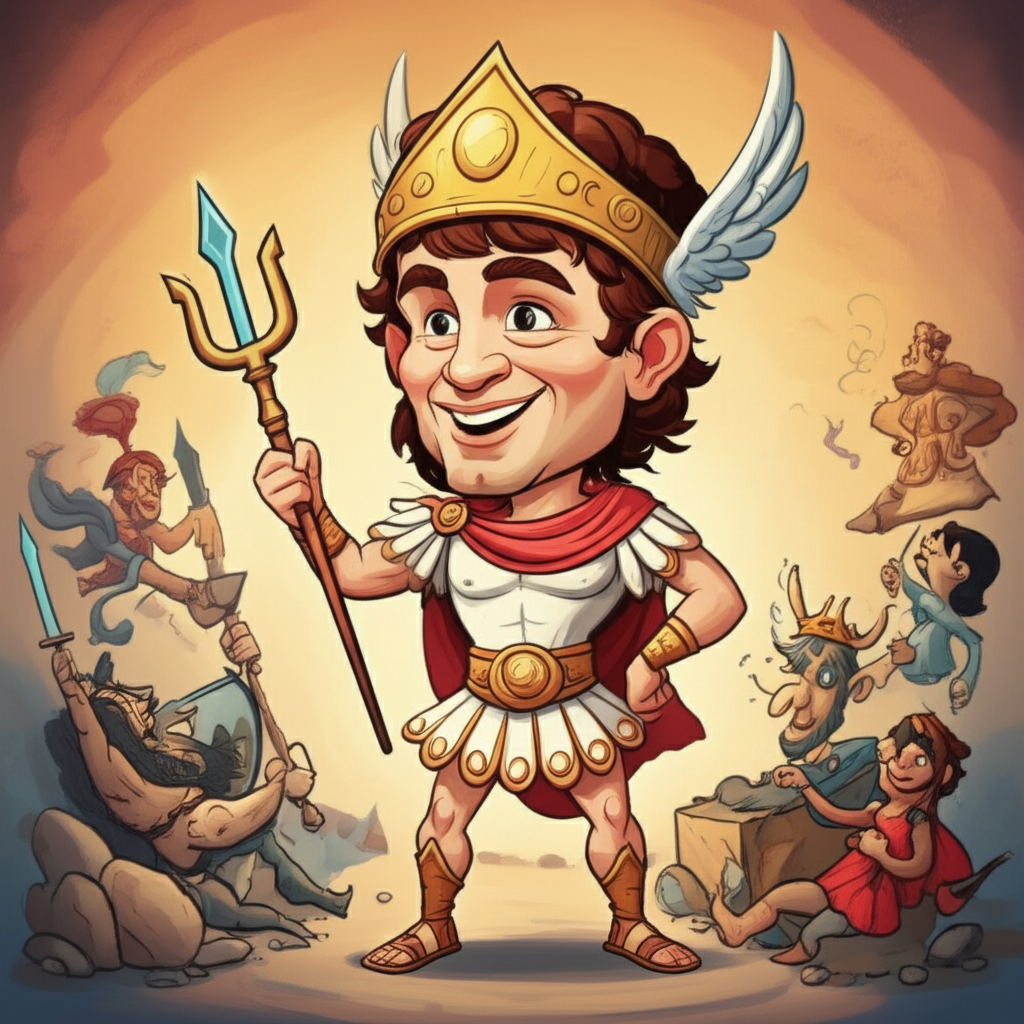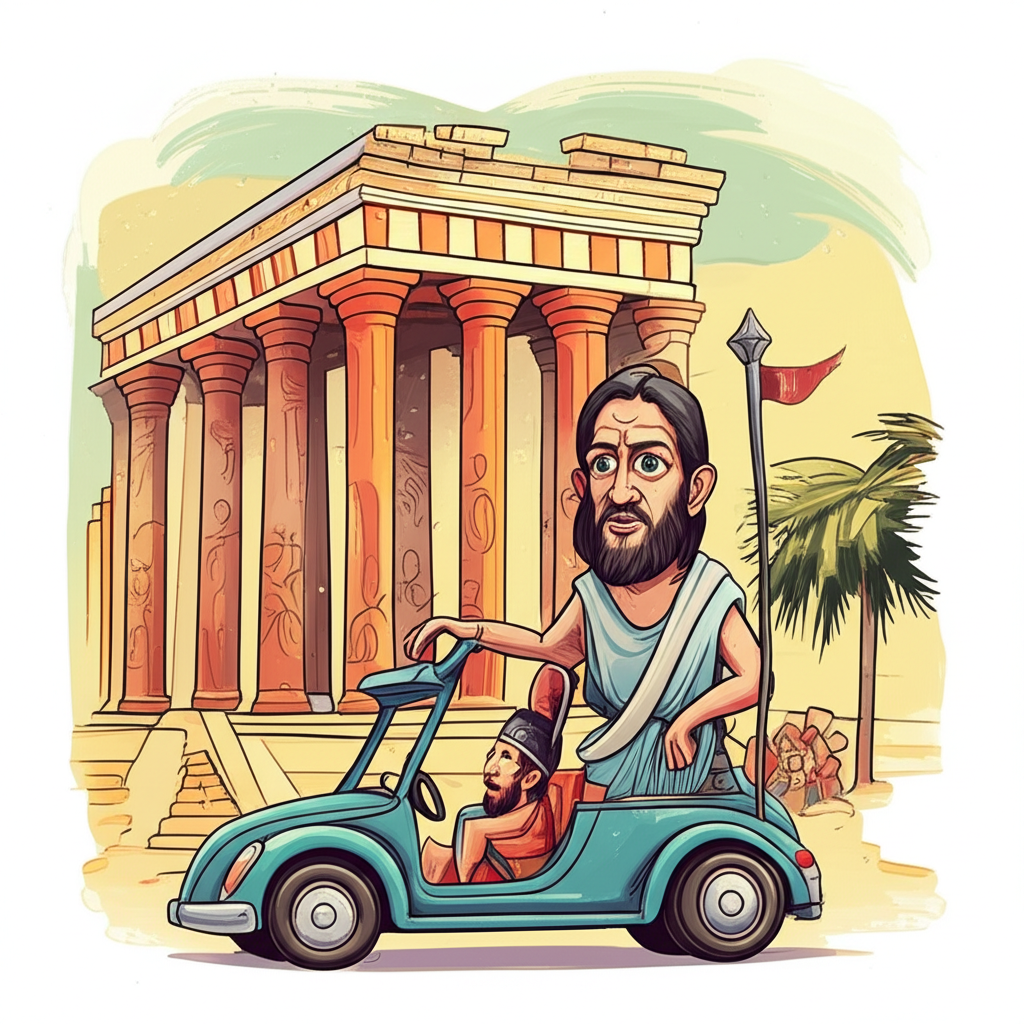
Introduction:
The story of Hermes and the Gigantomachy originates from ancient Greece, a civilization that flourished in the Mediterranean for centuries. This is a traditional story, a myth passed down through generations of Greeks. It’s a tale woven into the fabric of their culture, shared around hearths, recited in temples, and depicted in art. It is a story told by ancient people to explain their world, their fears, their hopes, and their understanding of the cosmos.
Origins and Cultural Background:
The era in which this myth took shape was a vibrant tapestry of city-states, each with its own identity and traditions. The ancient Greeks lived in a world where the natural and supernatural were intricately intertwined. They looked to the gods and goddesses of Mount Olympus for explanations of natural phenomena – thunder, storms, the changing seasons. The world was perceived as a stage where divine beings interacted with mortals, shaping their destinies. Fear, awe, and respect coexisted in their view of the divine. They built temples, offered sacrifices, and created elaborate rituals to appease the gods, believing that their favor was crucial for prosperity and survival. The myths were not simply entertaining stories; they were a means of understanding the universe, morality, and the human condition. They believed that these stories held the keys to unlocking the mysteries of life and death, good and evil.
Character / Creature Description:
Hermes, the swift-footed messenger of the gods, is a central figure in the Gigantomachy, or the war against the Giants. He is often depicted as a young, athletic man, characterized by his winged sandals (talaria) and a herald’s staff (caduceus). These attributes are symbolic: the winged sandals represent his speed and ability to traverse vast distances, while the caduceus symbolizes negotiation, diplomacy, and the ability to mediate between different realms. He is also considered the god of commerce, thieves, travelers, and athletes. In essence, Hermes embodies quickness, communication, and the bridge between different worlds.
The Giants, the antagonists of the myth, are often portrayed as monstrous beings of immense size and strength. They are the offspring of Gaia (Earth) and Tartarus (the Underworld). They are depicted as embodying primal forces, chaos, and a challenge to the established order of the Olympian gods. Their very existence represents the untamed power of the earth, a force that could threaten the celestial realm.
Main Story / Narrative Retelling:
The Gigantomachy, the war of the Giants, was a cataclysmic conflict that threatened to overturn the rule of the Olympian gods. Gaia, angered by the imprisonment of her Titan children by Zeus and the Olympians, stirred up the Giants. These monstrous beings, born from the earth itself, rose up to challenge the gods’ authority.
The battle raged across the land, a clash between cosmic forces. The Giants, fueled by their raw, untamed power, stormed the heavens, their massive forms shaking the very foundations of Olympus. The gods, with Zeus at their head, fought bravely, but the Giants’ strength and numbers posed a serious threat.
Hermes, with his characteristic swiftness and cunning, played a crucial role in this epic struggle. He acted as the messenger, relaying commands and strategizing the battle. He used his speed to outmaneuver the lumbering Giants, delivering vital information and carrying messages between the gods. He did not possess the brute force of some of the other deities, but his intelligence and agility proved invaluable.
One particularly significant act of Hermes’ involvement concerned the Giant Hippolytus, who was invulnerable to divine weapons. Hermes, through either deception or trickery (accounts differ), convinced the Giant to step outside of the land of the gods and into the mortal realm. Upon doing so, Hippolytus was slain.
The battle was long and arduous, a testament to the enduring struggle between order and chaos. In the end, with the combined strength and cunning of the Olympian gods, aided by the invaluable contributions of Hermes and other divine heroes, the Giants were defeated. They were either slain, buried beneath mountains, or banished to the depths of Tartarus. The Olympians’ rule was secured, reaffirming their dominion over the cosmos.
Symbolism and Meaning:
The Gigantomachy, with Hermes as a key figure, is rich in symbolic meaning. The battle represents the triumph of order over chaos, of the established divine order over the forces of raw, untamed nature. Hermes, as the messenger and mediator, embodies the importance of communication, strategy, and swift action in overcoming adversity. His role also suggests the value of intelligence and diplomacy, even in the face of overwhelming power. The Giants, on the other hand, symbolize the untamed, destructive forces of the earth, the potential for rebellion and disruption. Their defeat represents the control of those forces by the gods and, by extension, the triumph of civilization over barbarism.
Modern Perspective:
Today, the story of Hermes and the Gigantomachy continues to resonate. It is found in countless forms of modern media. It’s a theme explored in literature, from fantasy novels to graphic novels, where the battle is often adapted to reflect contemporary social and political struggles. The characters and the story have also found their way into video games, films, and television shows. This enduring appeal is a testament to the universality of its themes – the struggle between good and evil, order and chaos, and the importance of courage, intelligence, and cooperation in the face of adversity. The myth is also studied in academic settings, explored through cultural studies and the study of ancient civilizations.
Conclusion:
The story of Hermes and the Gigantomachy, as recounted in ancient Greece, is a fascinating window into the worldview of a civilization long past. It is a cultural artifact, a story told to explain the world and to reflect upon the human condition. It is a tale of gods and monsters, of epic battles and heroic deeds. As Muslims, we recognize that the true Creator and Sustainer is Allah. The stories of other cultures can be examined for their historical and cultural importance. The stories and myths of other cultures are an important part of human heritage, offering glimpses into the diverse ways humans have understood their place in the universe. They showcase the power of the human imagination and the enduring appeal of storytelling.





